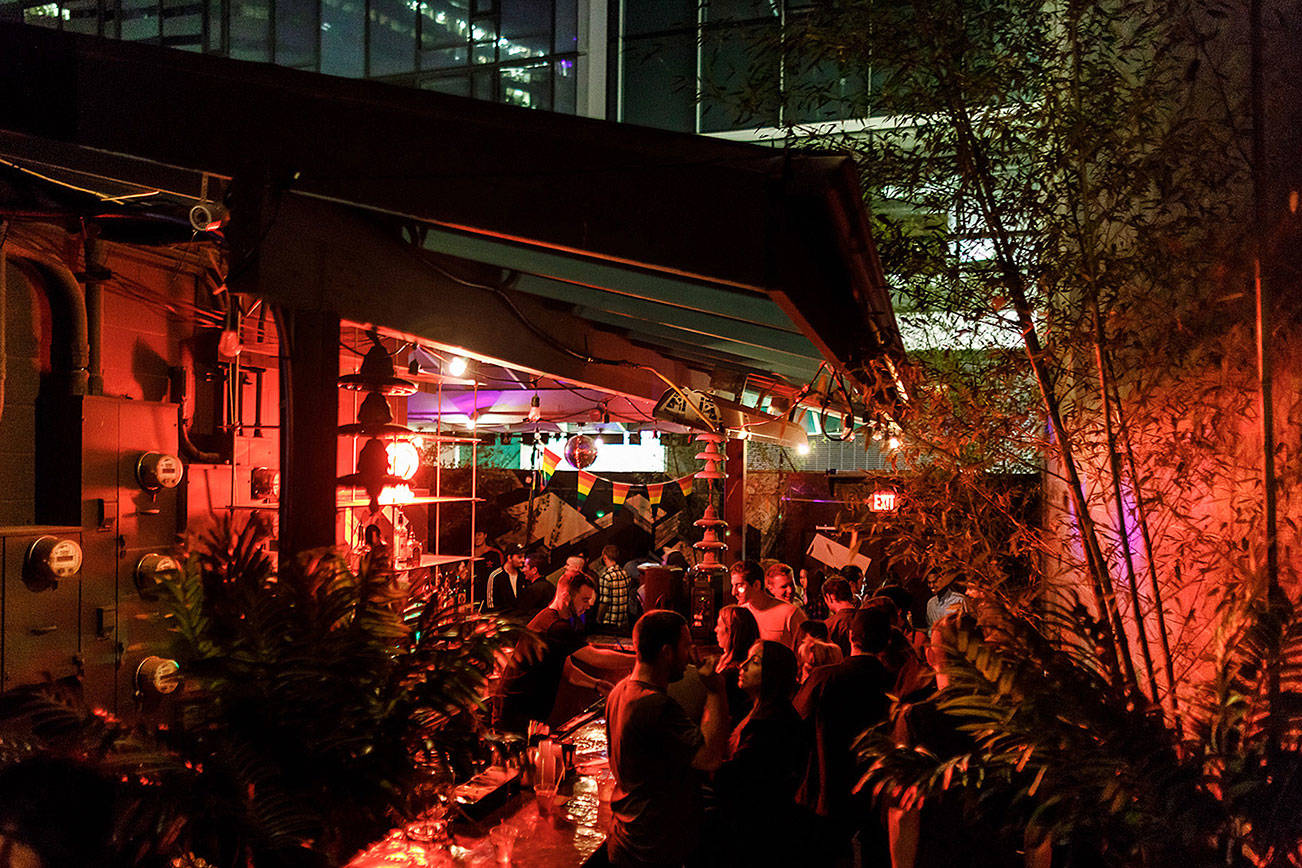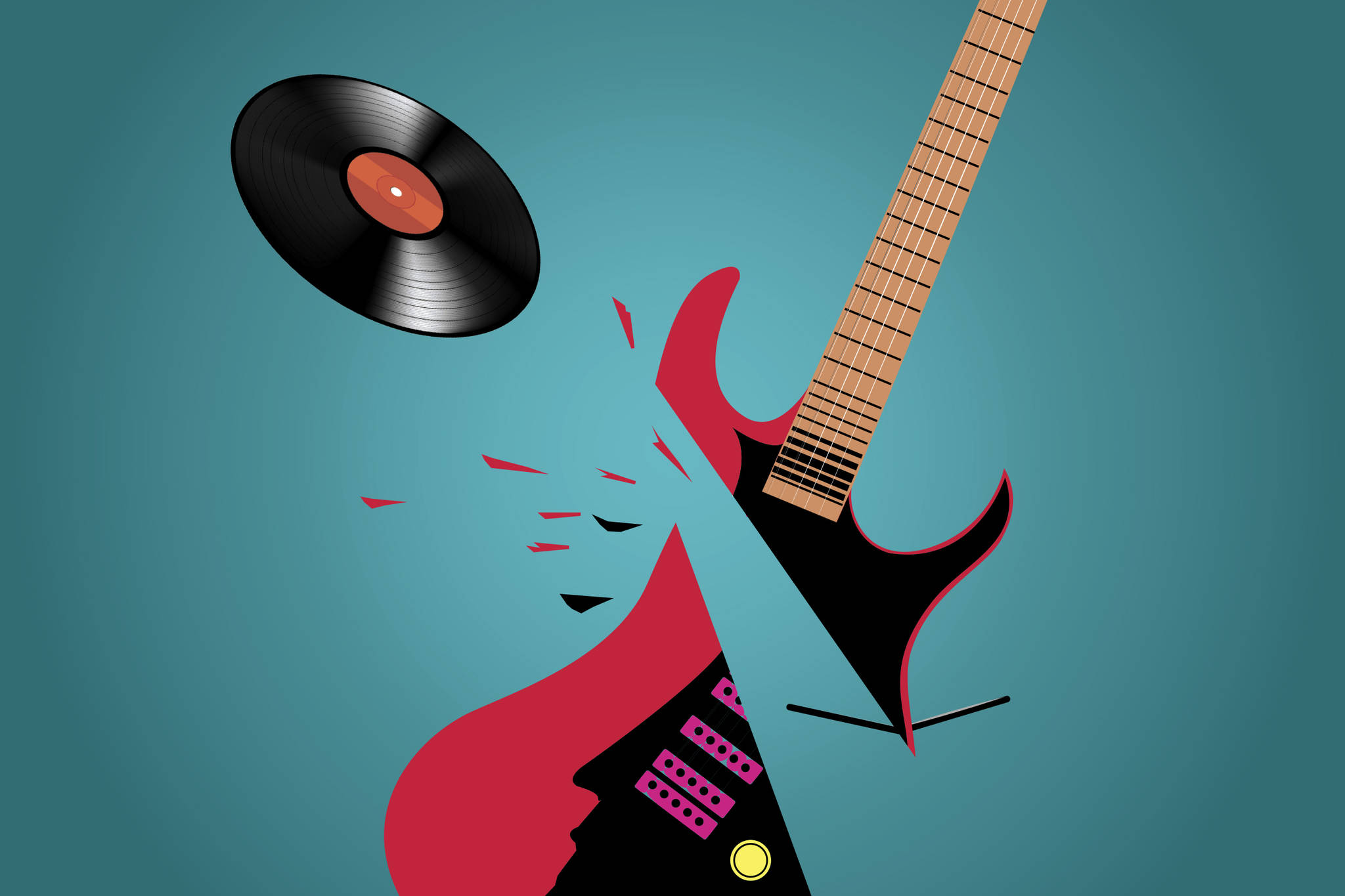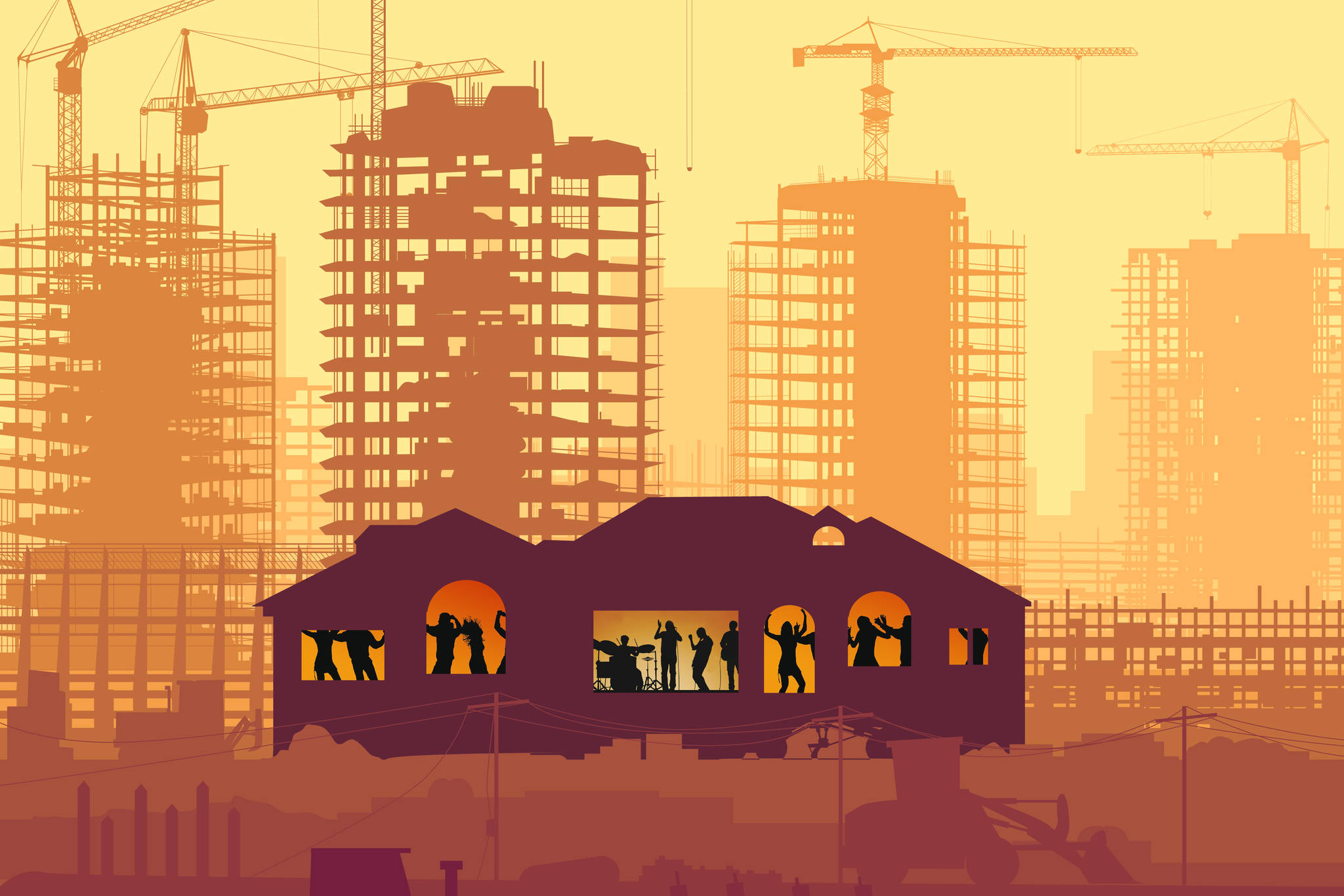It’s a Saturday night in a dark basement, the music is uncomfortably loud, and there—on a slightly raised stage in the middle of a crowd of folding chairs—is Melania Trump.
Well, not Melania per se, but an approximation. Her hair is piled higher than the real thing, and her eyeliner wings out much further than good taste would dictate—into the stratosphere of her face. A voiceover cribbed from CNN explains that the first lady has not been seen in public for an unusual amount of time and the Melania onstage bats her eyes sheepishly. Record scratch. Suddenly “Break Free” by Ariana Grande booms out over the speakers. The scene devolves into madness: Melania dances, then yanks off two separate gowns; alarm bells go off; dollar bills rain down from the air; she shimmies so hard her breasts fall off. By the time drag queen Irene Dubois finishes her Melania lip-sync, the crowd is screeching in approval.
This is Cucci’s Critter Barn, one of the most popular monthly drag shows in Seattle. But this is not your normal crown-and-gown drag affair, however: The lip syncs are profane and strange, calibrated to incite “What the hell?” responses more than yells of “Yaas queen!” Tonight’s performance will feature vomit, balloons filled with glue, and a queen dressed as Winnie-the-Pooh lustily cavorting in honey with Piglet and Rabbit (both in jockstraps). That Critter Barn continues to flourish is thanks in no small part to its home: the dark basement, the largest section of the Kremwerk Complex.
You could be forgiven for having missed Kremwerk; the sawed-off little building on Minor Avenue is surrounded on almost every side by high-rise apartment buildings. Fans of electronic music know the Kremwerk Complex—which also features an above-ground venue, the Timbre Room; a patio bar; and a pizza place called Little Maria’s—as one of Seattle’s premier venues for underground dance music. But quietly, without much fanfare, Kremwerk has become something else—one of the foremost places in the city to see daring, inclusive queer performance art.
“If you came to Kremwerk in its first year,” owner Nicole Stone says with a laugh, “it was a very different place.” Opened in 2014 in a building that once housed a frozen bonbon factory (Kremwerk is a rough translation of “cream works” in German), the venue was originally conceived as something in the vein of Berghain, the legendary Berlin nightclub. “When I decided to open a nightclub, I was spending a bunch of time in Berlin,” says Stone, “and I kind of liked the vibe and the feel of Berghain. I said, ‘Y’know, Seattle needs something like this.’ ”
Initially, the club focused on showcasing forward-thinking electronic music, and that’s still a major objective. But after the success of its first drag event, Art Haus, Stone decided to create more alternative-leaning queer events. “After Art Haus kind of blew up, it kind of seemed like people needed a home and a place to feel safe,” she says. So she hired a full-time queer programming manager, Jeanne-Marie Joubert, and the two began working in earnest to fill out the schedule.
“As a trans, lesbian woman who has struggled my entire life to be myself, and who grew up in a world of shame about being who I am, it was very important for me to have a place that people could feel safe,” Stone explains. “We do everything we can to be as creative as possible. It took me a long time to get to the place that I am, and it’s important for me to get to be able to nurture and enable people to be themselves.” After Art Haus’ success, the number of drag, burlesque, erotica, and queer variety shows hosted at Kremwerk exploded, helped in part by the expansion that added Timbre Room and Little Maria’s in 2016.
Despite still being relatively young, Kremwerk has staked out a place by taking risks on some of the most unusual shows in Seattle. Of the upcoming events currently listed on the Kremwerk website, over half are drag and queer entertainment, and many are formally inventive. Notably, there’s Thrifttease, a found fashion show and strip auction; Queens for Kids, a drag show for children; Rapture, an avant-garde look party; and Dungeons & Drag Queens, a role-playing comedy show. “Kremwerk is one of the only bars in the city consistently booking and paying alternative drag talent,” Arson Nicki, a drag performer and the host of Rapture, tells me. “With a few exceptions, what I do is typically relegated to guest spots alongside more palatable drag acts. Kremwerk is one of the only places in town that I know of where artists like me can be the stars of the show, too.”
The Kremwerk also hosts Kings, Seattle’s only monthly drag king night. “Y’know the kings community, they’re another culture that doesn’t have a forum or a place to be themselves,” explains Stone. “It’s so important for us to let kings know that they can come here and that we support anybody.”
The host of Kings and two other monthly shows at Kremwerk, Mercury Divine, appreciates the venue’s cosmopolitan approach to booking. “They’re extremely welcoming to performers of all varieties and identities, and they make a conscious effort to include all sorts of programming for all kinds of audiences. From fetish nights to drag-king nights to fashion shows, burlesque, music. You name it, and Kremwerk represents it somewhere in their programming.”
Stone and Joubert explain that part of Kremwerk’s ethos is a commitment to the safety of queer patrons. All employees undergo safe-space training, and even the non-queer events are booked with the safety of those patrons in mind. Additionally, they’ve made an effort to highlight performers who exist outside conservative definitions of drag. “Compared to other clubs, we have more non-binary and trans performers,” Joubert tells me. “I think they feel like they’re accepted here, and like they have a forum to showcase their art. It’s not easy as a trans or non-binary person to be a drag performer everywhere. So that’s a big part of what we do.”
This approach has seemingly paid off. Many performers who’ve gotten their start at Kremwerk have since established their own recurring shows featuring new and emerging entertainers. The result has been a small renaissance in Seattle’s alternative drag scene. “My first time at Kremwerk was at one of the first showings of Cucci’s Critter Barn about three years ago,” says Arson. “I hadn’t been to many live drag shows at that point in my life—most of what I knew about drag came from RuPaul’s Drag Race. It was one of the first times I saw that drag could be so many more things besides glamour and rhinestones and jump splits.” She now makes about half her living from drag.
Michete, a queer musician, recently started performing in drag, due in part to events she attended at Kremwerk. “I meet so many aspiring drag artists when I go to Rapture, because it’s a party that encourages people to experiment with their looks and to really dress for the occasion,” she says. “I think queer people find that environment to be sort of a safe space to step into more dramatic and outlandish modes of presentation, which kind of becomes a stepping stone into doing drag for some people.”
This atmosphere has become even more important and Seattle’s queer community is forced further afield by rising costs. “As someone who works at a coffee shop in the heart of Capitol Hill, I can say first-hand that Seattle’s getting straighter and tech-ier by the day,” says Americano, who hosts Kremwerk’s RuPaul’s Drag Race viewing parties. “We need all the help we can get to keep this city as queer as possible.” Arson is more strident: “We face fewer bookings and underpayment, often within forms and genres we created. We are left out until we prove ourselves to be financially and socially profitable. We are not always protected by the venues that host us.”
But despite, or perhaps because of, this, Stone and her staff are committed to staying put and staying queer. “It’s really amazing how quickly Seattle’s landscape is changing,” Stone muses. “People have tried to buy me out, and I’m not going anywhere. I’m going to always maintain for queer Seattle, because places are going away, getting priced out. As downtown develops and all these high-rises come in, we’re going to be here and be queer.”






